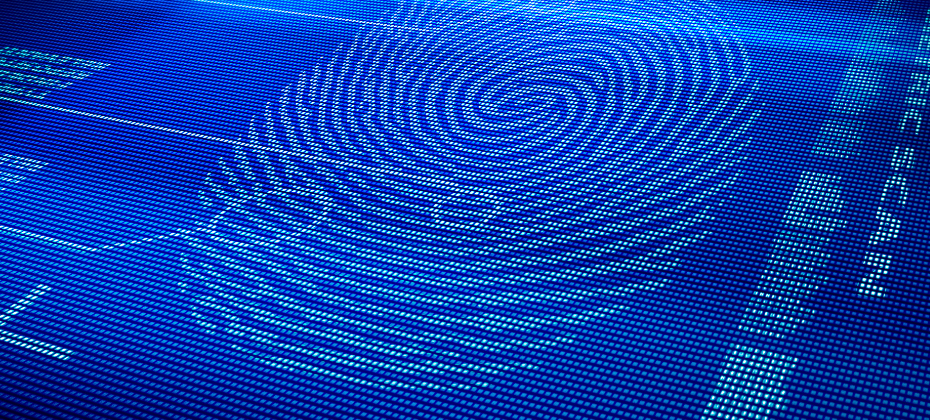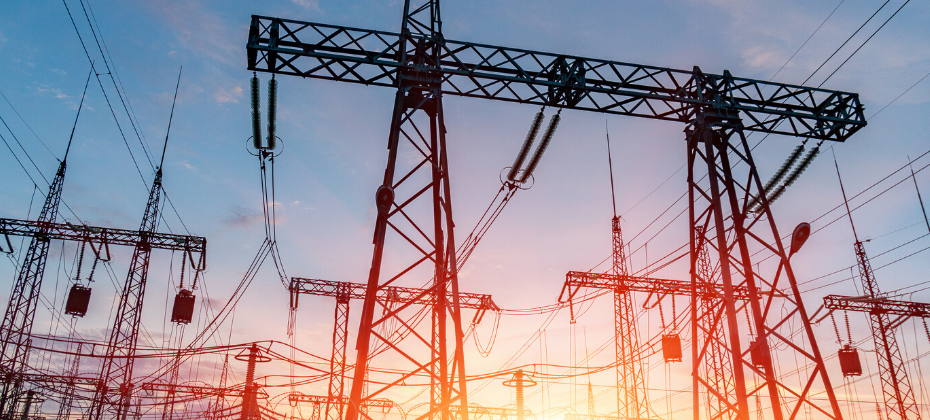Tag: CEM

The ongoing COVID-19 pandemic has facilitated an increase in information collection among consumers and organizations, creating a prosperous climate for cybercriminals. As businesses and customers adjust to the “new normal,” hackers are honing in on their targets and finding new, more sophisticated ways to access their sensitive data. As part of our recently launched Q&A perspective series, Michael Bruemmer, Experian’s Vice President of Data Breach Resolution and Consumer Protection, provided insight on emerging fraud schemes related to the COVID-19 vaccines and how increased use of digital home technologies could lead to an upsurge in identity theft and ransomware attacks. Check out what he had to say: Q: How did Experian determine the top data breach trends for 2021? MB: As part of our initiative to help organizations prevent data breaches and protect their information, we release an annual Data Breach Forecast. Prior to the launch of the report, we analyze market and consumer trends. We then come up with a list of potential predictions based off the current climate and opportunities for data breaches that may arise in the coming year. Closer to publication, we pick the top five ‘trends’ and craft our supporting rationale. Q: When it comes to data, what is the most immediate threat to organizations today? MB: Most data breaches that we service have a root cause in employee errors – and working remotely intensifies this issue. Often, it’s through negligence; clicking on a phishing link, reusing a common password for multiple accounts, not using two-factor authentication, etc. Organizations must continue to educate their employees to be more aware of the dangers of an internal breach and the steps they can take to prevent it. Q: How should an organization begin to put together a comprehensive threat and response review? MB: Organizations that excel in cybersecurity often are backed by executives that make comprehensive threats and response reviews a top corporate priority. When the rest of the organization sees higher-ups emphasizing the importance of fraud prevention, it’s easier to invest time and money in threat assessments and data breach preparedness. Q: What fraud schemes should consumers be looking out for? MB: The two top fraud schemes that consumers should be wary of are scams related to the COVID-19 vaccine rollout and home devices being held for ransom. Fraudsters have been leveraging social media to spread harmful false rumors and misinformation about the vaccines, their effectiveness and the distribution process. These mistruths can bring harm to supply chains and delay government response efforts. And while ransomware attacks aren’t new, they are getting smarter and easier with people working, going to school and hosting gatherings entirely on their connected devices. With control over home devices, doors, windows, and security systems, cybercriminals have the potential to hold an entire house hostage in exchange for money or information. For more insight on how to safeguard your organization and consumers from emerging fraud threats, watch our Experian Symposium Series event on-demand and download our 2021 Data Breach Industry Forecast. Watch now Access forecast About Our Expert: Michael Bruemmer, Experian VP of Data Breach Resolution and Consumer Protection, North America Michael manages Experian’s dedicated Data Breach Resolution and Consumer Protection group, which aims to help businesses better prepare for a data breach and mitigate associated consumer risks following breach incidents. With over 25 years in the industry, he has guided organizations of all sizes and sectors through pre-breach response planning and delivery.

The ongoing COVID-19 crisis and the associated rise in online transactions have made it more important than ever to keep customer information accurate and company databases up to date. By ensuring your organization’s data quality, you can allocate resources more effectively, minimize costs and safely serve your customers. As part of our recently launched Q&A perspective series, Suzanne Pomposello, Experian’s Strategic Account Director for CEM vertical markets, and William Palmer, Senior Sales Engineer, provided insight on how utility providers can manage and maintain accurate client data during system migrations and modernizations, achieve a single customer view and implement an operational data quality program. Check out what they had to say: Q: What are the best practices for effective data quality management that utility providers should follow? SP: To ensure data quality, we advise starting with a detailed understanding of the data your organization is currently maintaining and how new data entering your systems is being utilized. Conducting a baseline assessment and being able to properly validate the accuracy of your data is key to identifying areas that require cleansing and enrichment. Once you know what improvements and corrections need to be made, you can establish a strategy that will empower your organization to unlock the full potential of your data. Q: How does Experian help clients improve their data hygiene? SP: Experian has over 30 years of expertise in data cleansing, which is tapped to help clients deploy tactics and strategies to ensure an acceptable level of data integrity. First, we obtain a complete picture of each organizations objectives and challenges. We then assess the quality of their data and identify sources that require remediation. Armed with insight, we work alongside organizations to develop a phased action plan to standardize and enhance their data. Our data management solutions satisfy a wide range of needs and can be consumed in real-time, bulk and batch form. Q: Are there any protection regulations to be aware of when obtaining updated data? WP: Unlike Experian’s regulated divisions, most Experian Data Quality data elements are not burdened by complex regulations and restrictions. Our focus is on organizations’ main customer data points (e.g., address, email address and phone). We reference this data against unregulated source systems to validate, append and complete customer profiles. Experian’s data quality management tools can serve as a foundation for many regulatory, compliance and governance requirements, including, Metro 2 reporting, TCPA and CCPA. Q: Are demos of Experian’s data management solutions available? If so, where can they be accessed? WP: Yes, you can visit our website to view product functionality clips and recorded demonstrations. Additionally, we welcome the opportunity to explore our comprehensive data quality management tools via tests and live demonstrations using actual client data to gain a better understanding of how our solutions can be used to improve operational efficiency and the customer experience. For more insight on how to cleanse, standardize, and enhance your data to make sure you get the most out of your information, watch our Experian Symposium Series event on-demand. Watch now Learn more About Our Experts: Suzanne Pomposello, Strategic Account Director, Experian Data Quality, North America Suzanne manages the energy vertical for Experian’s Data Quality division, supporting North America. She brings innovative solutions to her clients by leveraging technology to deliver accurate and validated contact data that is fit for purpose. William Palmer, Senior Sales Engineer, Experian Data Quality, North America William is a Senior Sales Engineer for Experian’s Data Quality division, supporting North America. As an expert in the data quality space, he advises utility clients on strategies for immediate and long-term data hygiene practices, migrations and reporting accuracy.

New challenges created by the COVID-19 pandemic have made it imperative for utility providers to adapt strategies and processes that preserve positive customer relationships. At the same time, they must ensure proper individualized customer treatment by using industry-specific risk scores and modeled income options at the time of onboarding As part of our ongoing Q&A perspective series, Shawn Rife, Experian’s Director of Risk Scoring, sat down with us to discuss consumer trends and their potential impact on the onboarding process. Q: Several utility providers use credit scoring to identify which customers are required to pay a deposit. How does the credit scoring process work and do traditional credit scores differ from industry-specific scores? The goal for utility providers is to onboard as many consumers as possible without having to obtain security deposits. The use of traditional credit scoring can be key to maximizing consumer opportunities. To that end, credit can be used even for consumers with little or no past-payment history in order to prove their financial ability to take on utility payments. Q: How can the utilities industry use consumer income information to help identify consumers who are eligible for income assistance programs? Typically, income information is used to promote inclusion and maximize onboarding, rather than to decline/exclude consumers. A key use of income data within the utility space is to identify the eligibility for need-based financial aid programs and provide relief to the consumers who need it most. Q: Many utility providers stop the onboarding process and apply a larger deposit when they do not get a “hit” on a certain customer. Is there additional data available to score these “no hit” customers and turn a deposit into an approval? Yes, various additional data sources that can be leveraged to drive first or second chances that would otherwise be unattainable. These sources include, but are not limited to, alternative payment data, full-file public record information and other forms of consumer-permissioned payment data. Q: Have you noticed any employment trends due to the COVID-19 pandemic? How can those be applied at the time of onboarding? According to Experian’s latest State of the Economy Report, the U.S. labor market continues to have a slow recovery amidst the current COVID-19 crisis, with the unemployment rate at 7.9% in September. While the ongoing effects on unemployment are still unknown, there’s a good chance that several job/employment categories will be disproportionately affected long-term, which could have ramifications on employment rates and earnings. To that end, Experian has developed exclusive capabilities to help utility providers identify impacted consumers and target programs aimed at providing financial assistance. Ultimately, the usage of income and employment/unemployment data should increase in the future as it can be highly predictive of a consumer’s ability to pay For more insight on how to enhance your collection processes and capabilities, watch our Experian Symposium Series event on-demand. Watch now Learn more About our Experts: Shawn Rife, Director of Risk Scoring, Experian Consumer Information Services, North America Shawn manages Experian’s credit risk scoring models while empowering clients to maximize the scope and influence of their lending universe. He leads the implementation of alternative credit data within the lending environment, as well as key product implementation initiatives.

New challenges created by the COVID-19 pandemic have made it imperative for utility providers to adapt strategies and processes that preserve positive customer relationships while continuing to collect delinquent balances during an unpredictable and unprecedented time. As part of our ongoing Q&A perspective series, Beth Bayer, Experian’s Vice President of Energy Sales, and Danielle Grigaliunas, Product Manager of Collection Solutions, discuss the changing collections landscape and how the utility industry can best adapt. Check out what they had to say: Q: How are the COVID-19 crisis and today’s economic environment impacting consumer behavior? Particularly as it relates to delinquencies and payments? BB: Typically, when we experience recessions, delinquency goes up. In this recession, delinquency is declining. Stimulus money and increased unemployment benefits, coupled with stay at home orders, appear to be leading to more dollars available for consumers to repay obligations and debts. Another factor is related to special accommodations, forbearances, and payment holidays or extensions, that provide consumers with flexible options in making their regularly scheduled payments. Once an accommodation is granted, the lender or bank puts a code on the account when it’s reported to the bureaus and the account does not continue to age. Q: As a result of the pandemic, many regulatory bodies are recommending or imposing changes to involuntary disconnect policies. How can utility providers effectively collect, even if they can’t disconnect? BB: The public utility commissions in many areas have suspended disconnects due to non-payment, further increasing balances, delinquency and delaying final bill generation. Without the fear of being disconnected for non-payment in some regions of the country, customers are not paying delinquent utility bills. Utility providers should continue to provide payment reminders and delinquency notices and offer payment plans in exchange for partial payments to continue to engage customers. Identifying which customers can pay and are actively paying other creditors and institutions helps prioritize proactive outreach. Q: For utility providers who offer in-house collection services, what strategies and credit data do you find most valuable? DG: Current and accurate data is key when looking to provide stronger and more strategic collections. This data is built into efficient scoring models to articulate which debts are most collectible and how much money will be recovered from each consumer. Without the overlay of credit data, it’s harder for utility providers to predict how consumers prioritize utility debt during times of economic stress. By better understanding the current state of the consumer, utility providers can focus on consumers who are most likely to pay. Investing in monitoring solutions allows utility providers to receive notifications when their consumers are beginning to cure and pay off other obligations and take a more proactive approach. Q: What are the best methods for utility providers to reach collection consumers? What do they need to know as they begin to utilize omnichannel communications? DG: Regular data hygiene checks and skipping are the first line of defense in collections. Confirming contact information is correct and up to date throughout the entire consumer lifecycle helps to establish a strong relationship. Those who are successful in collections invest in omnichannel messaging and self-service payment options, so consumers have a choice on how they’d like to settle their obligations. Q: What current collection trends/challenges are we seeing within the utility space? BB: Utility providers do not traditionally report active customer payments and delinquencies to the credit bureaus. Anecdotally, our utility partners tell us that delinquencies are up and balances are growing. Many customers know that they cannot currently be disconnected if they fall behind on their utility payments and are using this opportunity to prioritize other debts. We also know that some utilities have reduced collection activities during the pandemic due to office closures and have cut back on communication efforts. Additionally, we’re hearing from some of our utility partners that collections and recoveries of final billed or charged-off accounts are increasing, despite many agencies closing and limited to no collection activities occurring. We assume this is because these balances are typically reported to the credit reporting agencies, triggering a payment and interest in clearing that balance first. Constant communication, flexibility, and empathizing with your customers by offering payment plans and accommodations will lead to an increase in dollars collected. DG: There’s been a large misunderstanding that because utility providers can’t disconnect, they can’t attempt to collect. The success of collections has been seen within first parties, as they are still maintaining strong relationships by reaching out at optical times and remaining top-of-mind with consumers. The utility industry needs to take a proactive approach to ensure they are focusing on the right consumers through the right channels at the right time. Credit data that matches the consumer’s credit health (i.e. credit usage and payments) is needed insight when trying to understand a consumer’s overall financial standing. For more insight on how to enhance your collection processes and capabilities, watch our Experian Symposium Series event on-demand. Watch now About our Experts: Beth Bayer, Vice President of Sales, Experian Energy, North America Beth leads the Energy Vertical at Experian, supporting regulated, deregulated and alternative energy companies throughout the United States. She strives to bring innovative solutions to her clients by leveraging technology, data and advanced analytics across the customer lifecycle, from credit risk and identity verification through collections. Danielle Grigaliunas, Product Manager of Collections Solutions, Experian Consumer Information Services, North America Danielle has dedicated her career to the collections space and has spent the last five years with Experian, enhancing and developing collections solutions for various industries and debt stages. Danielle’s focus is ensuring that clients have efficient, compliant and innovative collection and contact strategies.

The COVID-19 pandemic has created unprecedented challenges for the utilities industry. This includes the need to plan for – and be prepared to respond to – changing behaviors and a sudden uptick in collections activities. As part of our recently launched Q&A perspective series, Mark Soffietti, Experian’s Senior Manager of Analytics Consulting and Tom Hanson, Senior Energy Consultant, provided insight on how utility providers can evolve and refine their collections and recovery processes. Check out what they had to say: Q: How has COVID-19 impacted payment behavior and debt collections? TH: Consumer payment behavior is changing. For example, those who paid as agreed, may not currently have the means to pay and are now distressed borrowers. Or those who were sloppy payers before the pandemic may now be defaulting on a more consistent basis. MS: As we saw with the last recession when faced with economic stress, consumer and commercial payment behavior changes based on their needs and current cash flow. For example, people prioritize their car, as they need it to get to and from work, so they’ll likely pay their auto bills on time. The same goes for their credit cards, which they need to make ends meet. We expect this will also be true with COVID-19. The commercial segment will face more dramatic and challenging circumstances, where complete or partial business closures and lack of federal relief could have severe ramifications. Q: What new restrictions have been put in place surrounding debt collection efforts and outbound calls? TH: To protect consumers who may be experiencing financial distress, most states have imposed new, stringent restrictions to prevent utilities from engaging in certain collections activities. Utilities are currently not charging any late payment fees and are instead structuring payment plans. Additionally, all outbound collections efforts have been suspended and there is fieldwork being executed of services for both commercial and consumer properties. As of now, consumer and commercial fieldwork will likely not commence until after the first year or when the winter moratorium concludes. MS: The new restrictions imposed upon collections activities will likely drive consumer payment behavior. If consumers know that their utilities (i.e. energy and water) will not be shut off if they miss a payment, they will make these bills less of a priority. This will dramatically increase the amount owed when these restrictions are lifted next year. Q: Can we predict how the utilities industry will fare post-COVID-19? TH: The volume of accounts in collections and eligible for disconnect will be overwhelming. Many utility providers fear the unpaid balances consumers and commercial entities accumulate will be nearly impossible to fit into a repayment schedule. Both analyzing internal payment segments and overlaying external factors may be the best way to optimize the most critical go-forward plan. MS: The amount of people who fall into collections is going to greatly increase and utility providers need to start planning for it now to weather the storm. They will need to use data, analytics and tools to help them optimize their tasks, so they can be more efficient with their resources. Like many other industries, the utilities sector will look to increasing digitalization of their processes and having less social interaction where possible. This could mean the need and drive for expediting current smart meter programs where possible to enable remote fieldwork to assist in managing this unprecedented level of activity that is sure to overwhelm field operations (where allowed by state regulators). Q: What should utility providers be doing to plan for an uptick in collections activities post-COVID-19? TH: With regulatory mandated suspensions of collections activities for utility providers and self-selected reductions due to stay at home orders and staff protection, the backlog of payments, calls and inquiries once business resumes as normal is set to overwhelm existing capacity. More than ever, self-service options (text/web), Q&A and alternative communication methods will be needed to shepherd consumers through the collections process and minimize the strain on call center agents. Many utility providers are asking for external data points to segment their consumers by industry or by those whose employment would have been adversely impacted by COVID-19. MS: Utility providers should be monitoring consumer data in order to prepare for when they are able to collect. This will help them strategize the number of resources they will need in their call centers and out in the field performing shut off activities. Given that the rise in cases will be more volume than their call centers can handle, they will need to use their resources wisely and plan to use them efficiently when they are able to resume collections. Q: How can Experian help utility providers reduce collections costs and maximize recovery? TH: Experian can help revise collections tactics and segmentation strategies by providing insight on how consumers are paying other creditors and identifying new segmentation opportunities as we emerge from the freeze on collections activities. Collections cases will be complex, and many factors and constraints will need to balanced against changing goals, making optimization key. MS: Utilizing Experian’s credit data and models can help ensure that resources are being used efficiently (i.e. making successful calls). There is also a need to leverage ability to pay models as well as prioritization models. By using these models and tools, utility providers can optimize their treatment strategies, reduce costs and maximize dollars collected. Learn more About our Experts: Tom Hanson, Senior Energy Consultant, Experian CEM, North America Tom is a Senior Consultant within the Energy Vertical at Experian, supporting regulated energy companies throughout the U.S. He brings over 25 years of experience in the energy field and supports his clients throughout the customer lifecycle, providing expertise in ID verification, account treatment, fraud solutions, analytics, consulting and final bill/field optimization strategies and techniques. Mark Soffietti, Analytics Consulting Senior Manager, Experian Decision Analytics, North America Mark has over 15 years of experience transforming data into actionable knowledge for effective decision management. Mark’s expertise includes solution development for consumer and commercial lending across the credit spectrum – from marketing to collections.